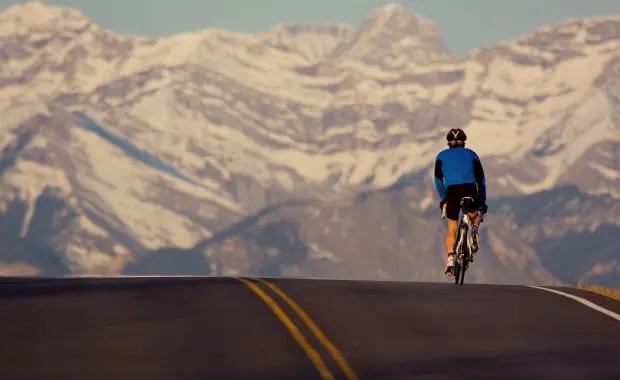
Challenging terrain is what cycling is all about. Unless you are a born and reared, stay-at-home flatlander you are no doubt aware of the effects of gravity and the need to become a better, more efficient climber. Getting better at cycling uphill requires improvements in both strength-to-weight ratio and technical skill. This article will address technical skills and save the strength-to-weight issue for later. Let's start with a few seldom discussed basics of seated climbing and literally go up from there.
Say you are climbing a grade like the famous Honey Springs hill in San Diego's Gran Fondo. It begins with about three to four percent, but as you start to feel your preciously accumulated tempo dropping off, you need to take action.
Cycling Events Near You
1. Your first reaction should be to shift into a smaller gear, maintain your RPM's and try and hold on to your speed. In order to keep your heart rate down you will want to stabilize your power with a gradual increase in effort level. The natural way to hold the power steady is to stay in the saddle.
2. Fight the tendency to keep shifting gears as the climb steepens. This will reduce your speed to a crawl and put you behind your peers. A good goal is to keep your heart rate in check, but accept the fact that it will continue to rise. As your speed drops and the lactic acid builds in your legs slide back in the saddle to change the firing order of the muscles and leverage more force from your glutes and quads. Try pointing your toes to bring the lower leg muscles into the firing pattern. This will add more fire to the back side of your stroke in hip flexion. Allow your heart rate to climb slowly and focus on the LIFT in your stroke.
3. Avoid falling into the novice trap of sitting up high with straight arms, usually with a bent back and a pedal stroke led by the heels pointing down. This disconnects the powerful stabilizing core muscles and the usually throws off the rhythm of your stroke. Instead, strive for a flat back with bent elbows, which lowers your center of gravity. By pulling from the contracted, supporting muscles of the core we can delay the accumulation of lactic acid in the primary muscles. What this looks like to the thongs of spectators lining the roads of the big tours is a rider with a neutral expression, bent elbows and gentle rocking from side to side while building forward momentum.
4. Maintain your focus. Novice riders typically get distracted when they can't see to top of the grade. They forget to breathe or breathe shallowly which causes form and focus to deteriorate as leverage and muscular force head south. Pay attention to your RPMs. Should a climb continue to challenge you, as they always seem to do, watch as RPM drops off. If more than 10 percent of your target range, of say 65 to 70 RPM's is lost, it may be necessary to either shift again, increase power, or maybe leave the saddle which is always your last resort since it will increase your metabolic burn rate.
These tips will help you cycle uphill for sure, but we have only scratched the surface. In our next FiTTE Technique session we will discuss a few details of climbing out of the saddle. Good luck this racing season. Stay alert and savor your ride.
Related Articles:


